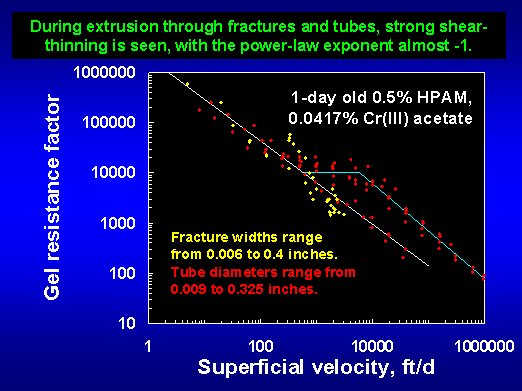Pressure Gradient Required For Gel Extrusion Increases With Decreasing Channel Width

The pressure gradients required to extrude formed gels through fractures are greater than those for gelant flow. Depending on conditions, the effective viscosity of formed gels in fractures are typically 103 to 106 times greater than those for gelants. However, useful gels do not show progressive plugging during extrusion through fractures. A minimum pressure gradient is required to extrude a given gel through a fracture. Once this minimum pressure gradient is exceeded, the pressure gradient during gel extrusion is insensitive to the flow rate.
For a Cr(III)-acetate-HPAM gel, the pressure gradient required for extrusion varies inversely with the square of fracture width (see Figure 1 above). In contrast, a force balance predicts that the pressure gradient should vary inversely with fracture width. Although the origin of this behavior has not been definitively identified, it is directly linked to the extremely strong apparent shear-thinning behavior during extrusion (see Figure 2 below). Note from the above figure that the pressure gradient for gel extrusion is not sensitive to the permeability of the porous medium that contains the fracture (i.e., from 1.5 to 10,000 md).
